Program Specification¶
Program Architecture¶
If there are 1,000 VM instances in your cloud, and 10 metrics per instance are inputed to the Synaps, it should process 10,000 metrics in a minute. And if your cloud runs well, you would have more VMs. So it should be distributed and scalable.
Synaps API is frontend of the system. Keystone can be integrated for authentication as well as LDAP. It uses RabbitMQ for asynchronous messaging.
Synaps topology runs on the Twitter Storm, the real-time distributed stream processing system. Storm manages distributing workers in the topology and handles failed workers.
The topology pulls messages from the queue, aggregates metric data and evaluates alarms in-memory, and write the result into Cassandra database. So that it helps reducing read operations that cost a lot. It invokes actions when the status of alarm has been changed. It can be integrated with mail server and SMS agents to send notifications to user-specified contact list and Nova API to reboot or migrate specified VMs.
Cassandra no-sql database is used for storing persistent data which is massively fast for writing operation and provides good availability and scalability. Deploying Cassandra and synaps-topology together can be a good choice for performance.
Each component of Synaps is linear scalable.
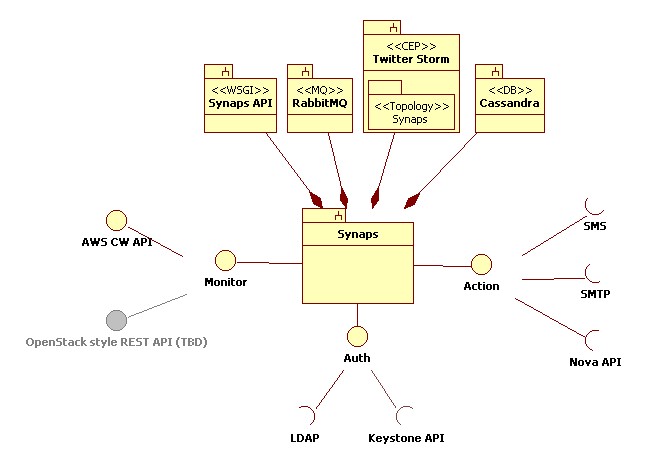
Synaps Architecture Overview
Synaps provides AWS CloudWatch compatible API so that users can use the SDKs for AWS CW for Synaps also. Boto, AWS CLI and AWS SDK for Java can be used to call Synaps API.
Internally, it can be integrated with agent which inputs your metrics of your cloud services so that users can monitor their resource in the cloud.
For example, VMMON which can get information from VM Hyperisor via libvirt APIs and Nova API and put metric data to Synaps so that users can utilize the data. But such agents are not in the scope of Synaps project.
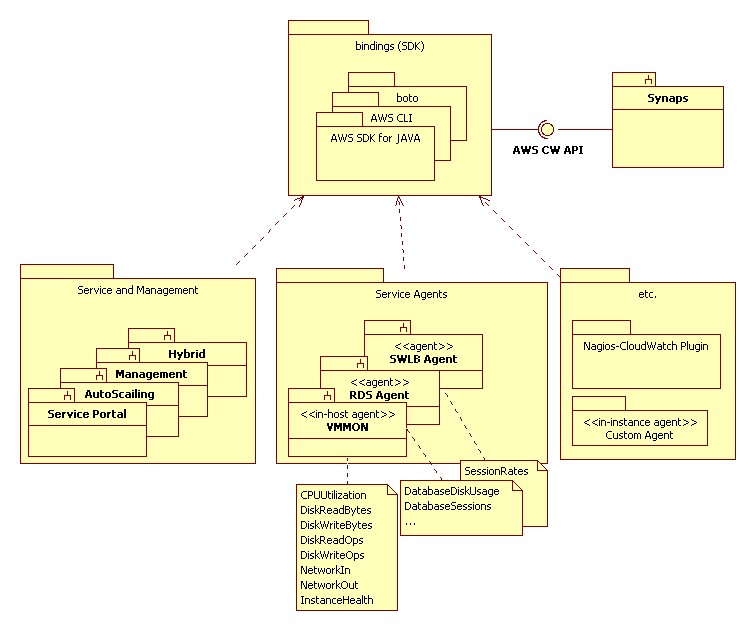
Synaps Integration Example
Synaps API description¶
Synaps API is WSGI based web server which provides AWS CloudWatch compatible API.
Asynchronous request processing¶
Actions below are processed asynchronously.
- DeleteAlarms
- PutMetricAlarm
- PutMetricData
- DisableAlarmActions
- EnableAlarmActions
- SetAlarmState
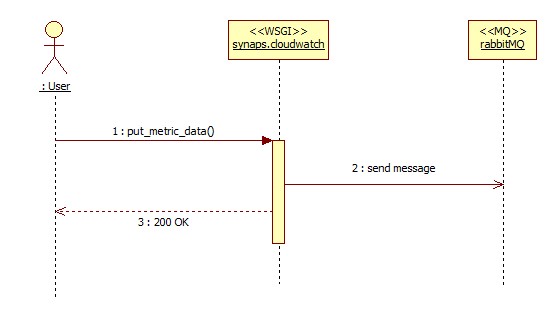
Example of asynchronous message processing
Synchronous request processing¶
Actions below are processed synchronously.
- DescribeAlarmHistory
- DescribeAlarms
- DescribeAlarmsForMetric
- GetMetricStatistics
- ListMetrics
For example,
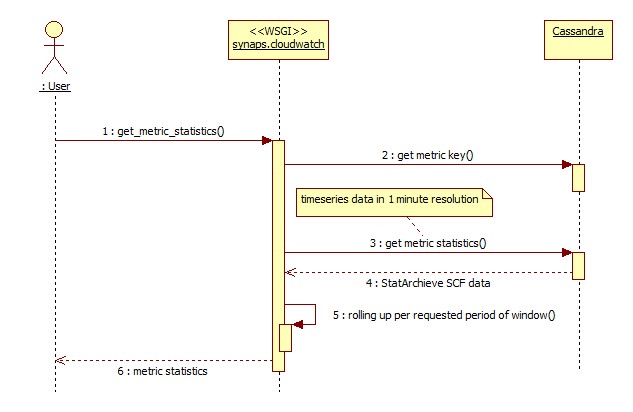
Example of synchronous message processing
Synaps topology description¶
Synaps topology is aimed to run on the Twitter Storm, real-time distributed stream processing system.
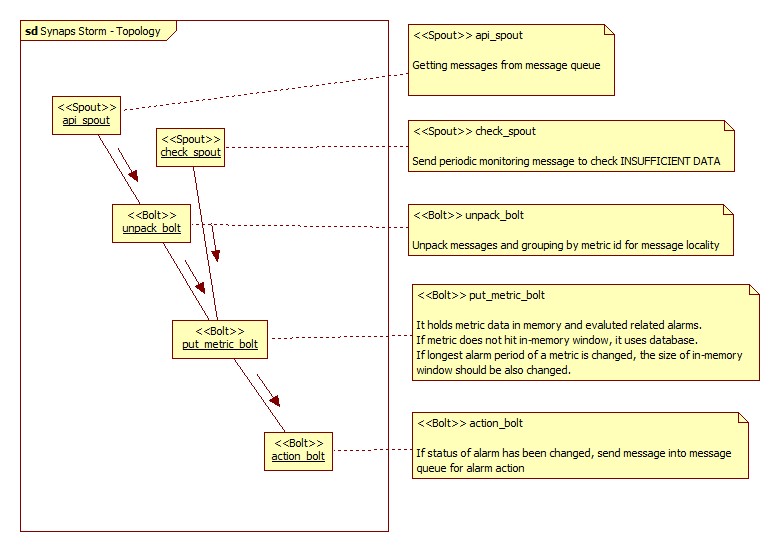
Synaps topology for Storm
PutMetricData message processing¶
This function is the most important part of Synaps. When the PutMetricData message is received via RabbitMQ message queue, it reads its in-memory sliding windows or database to aggregate its datapoints and evalutate status of its alarms. If the status is changed, it sends action message to notification queue.
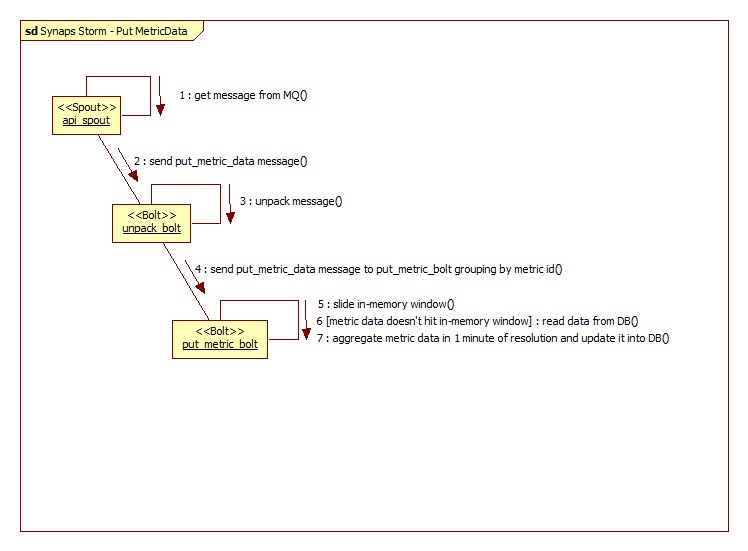
Synaps topology - PutMetricData
PutMetricAlarm message processing¶
When the PutMetricAlarm message is received via RabbitMQ message queue, it find its metric and update its in-memory alarm data and update it into database.
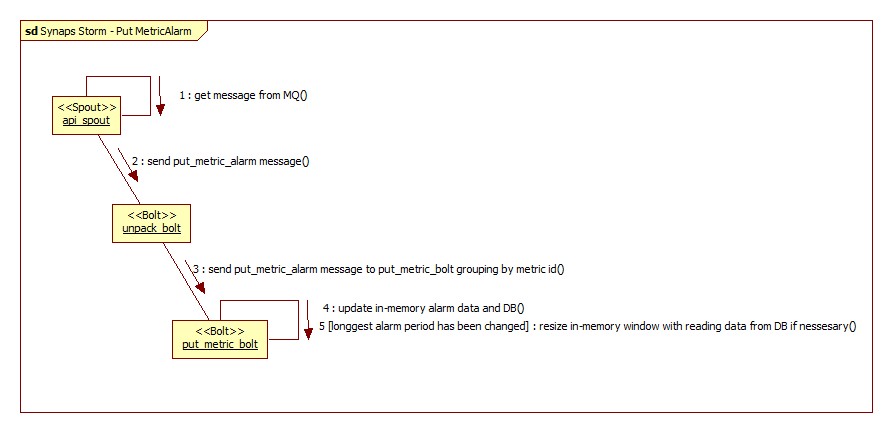
Synaps topology - PutMetricAlarm
PeriodicMonitoring message processing¶
‘check_spout’ generates PeriodicMonitoring message every 1 minute. When this is generated, it checks their whole alarms if they are not evaluated alarms recently PutMetricData message processing.
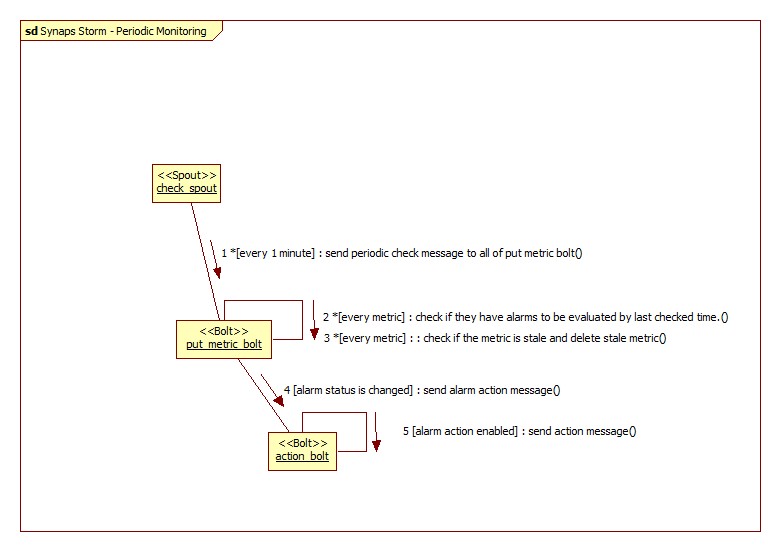
Synaps topology - PeriodicMonitoring